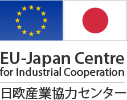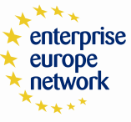The overall majority of tenders in Japan are evaluated on one criterion: - lowest price. The reasoning behind this is that all suppliers participating are deemed to possess the ability and skills to meet the conditions of the tender, ensured by the Supplier Qualification System.
Projected Price
For each tender, the procuring entity sets an projected price (yotei kakaku), which is ordinarily not published before the tendering process has finished. However, in recent years, to increase the transparency of the tendering process, projected prices have been published in advance
The projected price is determined by taking the following into account:
- Actual price of similar transactions in the past;
- Balance between supply and demand;
- Level of complexity of the tender;
- Quantity procured and
- Time allowed for the delivery
The lowest price should not exceed the projected price. In case none of the bids is lower than the projected price, the bidding process is repeated. The bidding is ceased if, after several submissions, the projected price is not reached. In that case the procuring entity will
- Negotiate individually with the tenderers without modifying the conditions of the tender and award the contract to a bidder that is offering a price lower than the estimated price; or
- Repeat the entire procedure, with tender conditions and the projected price modified.
Source: MOFA, Suggestions for Accessing the Government Procurement Market of Japan, page 17
Minimum price: anti-dumping measures
Next to the estimate price, the procuring entity will also determine a minimum price. If the winning bid is lower than this minimum price, this might result in an investigation into ‘dumping’ practices, as a substantial lower bid will raise questions about whether the winning bidder is able to execute the project successfully. Methods for calculating the price-ranges depend on numerous factors, such as the kind of tender and procuring entity. Lowest price investigation systems are in particular found in construction projects.
Source: Ministry of Internal Affairs and Communications (In Japanese)
Source: MLIT, “Dealing with low price tenders” (In Japanese)
Overall Greatest Value Method (OGV)
Sougouhyouka rakusatsu houshiki
The most commonly used evaluation method used in combination with the lowest price, is the Overall Greatest Value Method (OGV) OGV is used in case of complex tenders and tenders in certain categories.
OGV is mandatory in the following product categories:
- Computer products and services;
- Telecommunication products and services;
- Medical technology products.
OGV is also used for most public works tenders at the national level, and adoption of this method at the regional and local level is progressing. METI is using the OGV-method to evaluate tenders for surveys, advertising and R&D projects. The contents of the actual evaluation vary according to the scale, character and the complexity of the tender. An outline of possible OGV procedures is given here.









